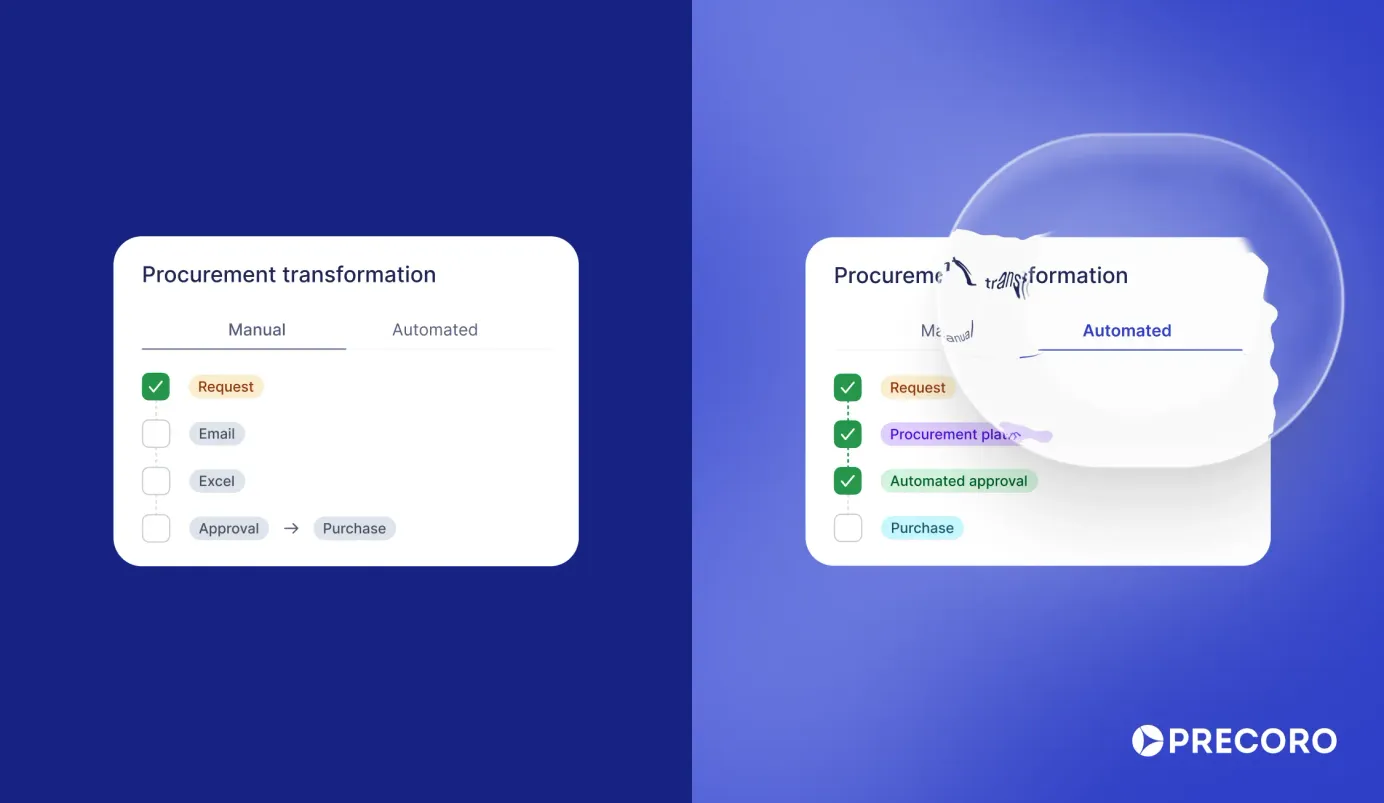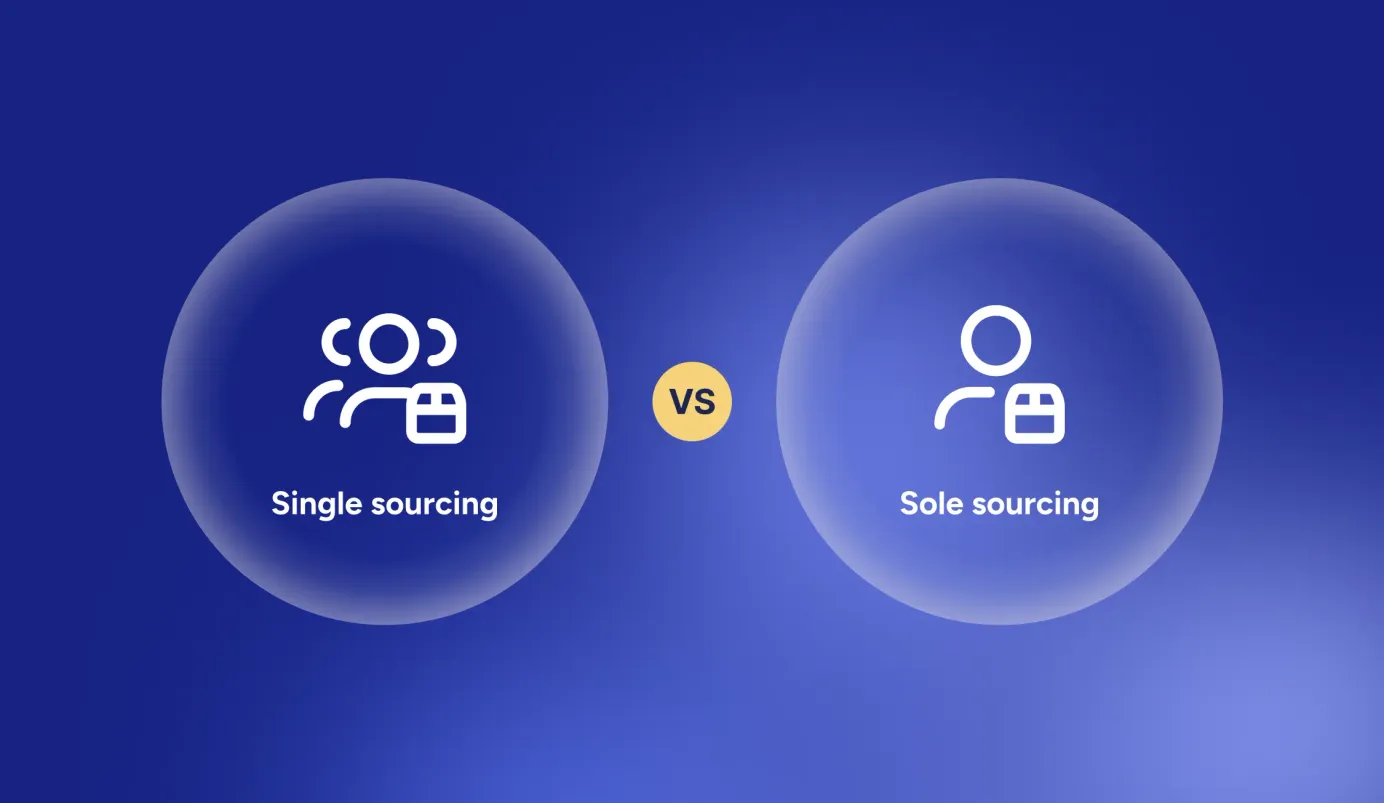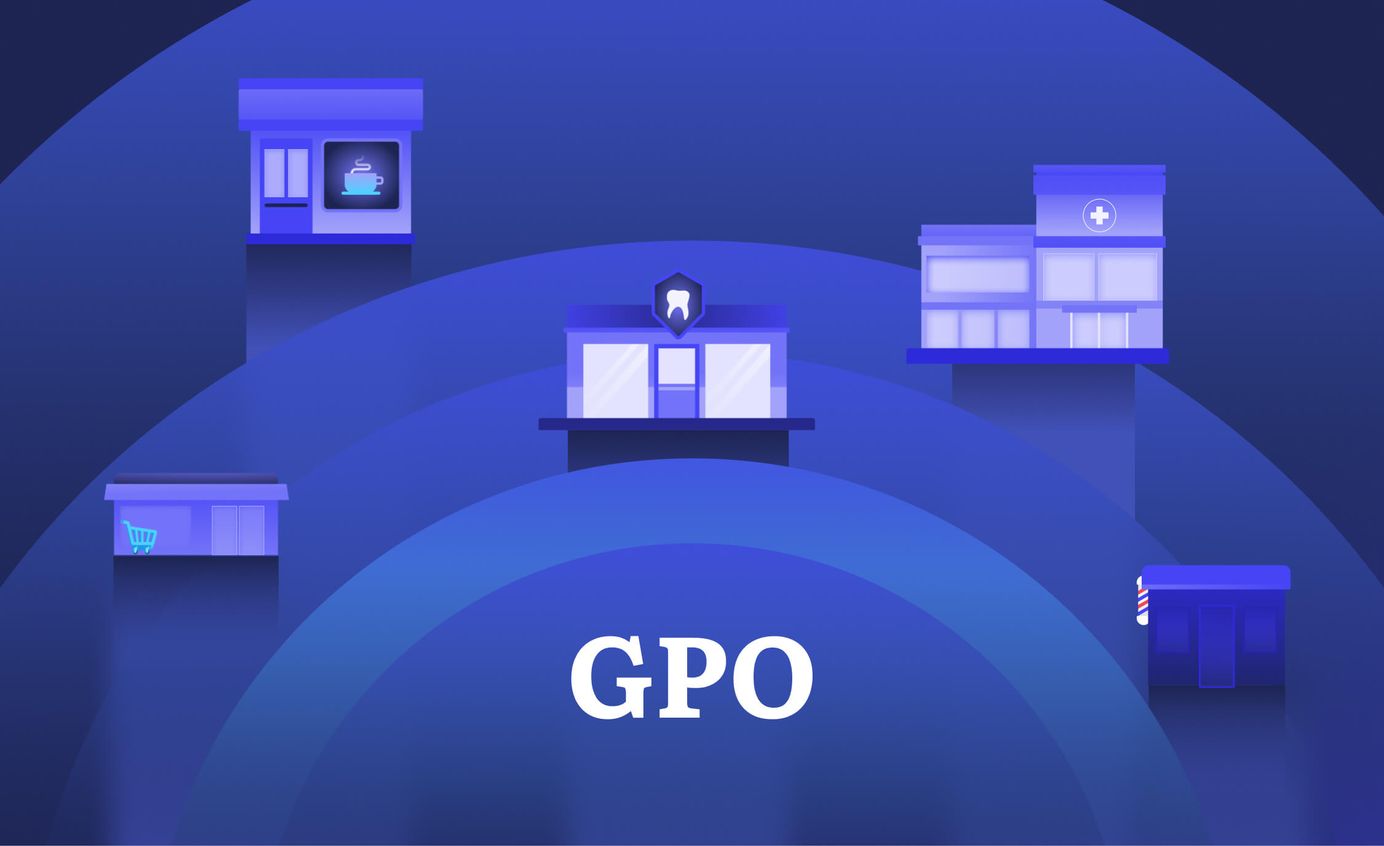
10 min read
Group Purchasing Organizations: Principle of Work, Pros, and Cons
Group purchasing organizations (GPOs) enable companies to buy goods and services at lower prices. Learn how GPO groups work and tips for efficiency.
Many SMBs feel disadvantaged because they have little leverage in negotiations with suppliers or vendors and can’t secure discounts due to low order volumes. Small companies may also lack the resources to create a dedicated procurement team for proper sourcing and supplier vetting.
Group purchasing organizations can be the perfect way for these companies to increase cost savings. But are GPOs a good fit for everyone? Learn how they work, their benefits and limitations, and how they fit in with procurement software.
Keep reading to learn:
- What is a group purchasing organization?
- How do group purchasing organizations work?
- What are the benefits of group purchasing?
- What are the common limitations of GPOs?
- How can procurement software help companies drive more value from GPOs?
- Frequently Asked Questions
What is a group purchasing organization?
A group purchasing organization (GPO), also called a group buying organization, is an entity that unites multiple companies and uses the collective buying power of its members to get discounts from suppliers and vendors. As a result, organizations that engage in group purchasing can leverage cost savings without the need to buy in bulk. GPOs also help their members achieve better terms and service standards.
GPOs are widely adopted across various industries, including healthcare, government procurement, food service, online marketplaces, hospitality, and nonprofits. Nowadays, there are more than 600 group purchasing organizations in the U.S. alone. Any business, regardless of size, can join a GPO to access pre-negotiated contracts with suppliers.
The first group purchasing organization (GPO) in the US was established in the healthcare industry in 1910 to help hospitals buy medical supplies and pharmaceuticals at reduced prices. Medicare and Medicaid spurred the expansion of GPOs, increasing their number to about 40 by 1974. Between 1974 and 1977, as healthcare costs rose and scrutiny intensified, the number of GPOs increased to 120.
Only in the late 1900s did other industries catch up and form GPOs. As group purchasing became more widespread, government bodies and regulatory agencies began examining and assessing GPOs to ensure transparency and fairness in their practices. With time, the role of GPOs has expanded to include not just cost savings but also improving supply chain efficiency, compliance with regulations, and promoting best practices among members.
There are two main types of group purchasing organizations:
-
Vertical GPOs are industry-specific and commonly found in healthcare, hospitality, and government sectors. Small organizations join vertical GPOs to meet purchasing volume and supply needs.
-
Horizontal GPOs pool buying power across multiple sectors and they operate regionally or nationally. These GPOs cater to businesses of all sizes and industries, providing volume advantages for smaller enterprises, though their selection of suppliers may not be as specialized as vertical GPOs.
Additionally, there are master purchasing organizations (MPOs) established by large corporations to combine their internal buying power with that of their subsidiaries and divisions. Thus, while they provide a service comparable to GPOs, external companies can’t join them.
How do group purchasing organizations work?
Group purchasing organizations are a win-win solution for both buyers and suppliers. GPOs help their member companies save money on supplies by offering pre-negotiated contracts with various suppliers. These contracts ensure that members get better prices on the products they need. At the same time, suppliers benefit by gaining access to a large, ready market for their products through the GPO’s network.
It’s important to understand that GPOs don’t make purchases themselves but link members to suppliers and contracts, serving as a centralized purchasing system for their members. After a company signs a GPO contract, it still has the autonomy to decide which purchase to make, and it can still purchase off-contract. However, the GPO contract may require members to buy a certain amount of product within the contract term.
GPOs can generate revenue in different ways. Some charge participation fees, while others collect small fees from suppliers, making membership free for organizations. These fees for vendors are typically a percentage of the purchase price paid by healthcare providers through a GPO contract. Some GPOs charge both membership fees and supplier contract fees.
Group purchasing organizations are subject to scrutiny, particularly in a vital industry like healthcare. The GPO Safe Harbor provision is a part of the 1987 Medicare and Medicaid Patient Protection Act, and it ensures the legality of GPO practices and their cost-saving benefits. GPOs disclose all administrative fees annually, and any fee above 3% must be included in the contract. This transparency is enhanced by initiatives like The Healthcare Group Purchasing Industry Initiative (HGPII), which is relevant for GPOs participating in the Health Care Spending Account. The initiative ensures ethical practices and independent annual audits.
To choose and establish relationships with reliable suppliers, GPOs conduct market research, data analysis, and benchmarking. They can also offer their members value-added services such as consultations on best practices, electronic invoicing, cost-saving reports, product use standardization, trend analysis, and budgeting tools.
What are the benefits of group purchasing?
Let’s explore what motivates companies to choose the group purchasing method of sourcing.
Unlocked savings
GPOs help their members save money through up-front pricing discounts, reduced administrative costs, and product standardization.
According to a report conducted by the Centers for Medicare and Medicaid Services (CMS), GPOs save the entire healthcare system $34.1 billion annually and will save the healthcare industry $456.6 billion over 2017-2026.
Using GPO contracts is beneficial not only for essential products and services but also for indirect purchases and infrequent orders. Companies often pay more for items they purchase in small quantities, such as office supplies or furniture. Joining a GPO allows them to access larger discounts without increasing their purchase volume.
Decreased labor
GPOs manage sourcing, contract negotiations, and supplier relationships for their members. This involves extensive market research, comparison of suppliers, and negotiation of terms to secure the best prices and conditions. As a result, member organizations can free their staff up for core activities and strategic tasks.
Streamlined ordering process
A group purchasing organization streamlines the ordering process by acting as a single point of contact for business purchases. Companies can choose from a list of vendors with pre-negotiated contracts and follow a standardized procurement process designed to best meet the needs of all participating members.
Reduced risks
GPOs provide their members with access to pre-vetted, reliable vendors, reducing the risk of fraud. Additionally, GPO contracts offer favorable prices, ensuring that companies avoid overpaying for products due to poor research or low volume of orders. Joining a GPO agreement can also reduce the risk of maverick spending, as GPOs typically offer a wide range of suppliers. This increases the likelihood that employees will find what they need from the list of trustworthy vendors.
A go-to source for market knowledge
GPOs often offer recommendations for member companies to optimize their purchasing process and derive more value from suppliers. Some group purchasing organizations also offer educational resources such as articles, newsletters, guides, and webinars to provide valuable insights and keep members informed of industry news.
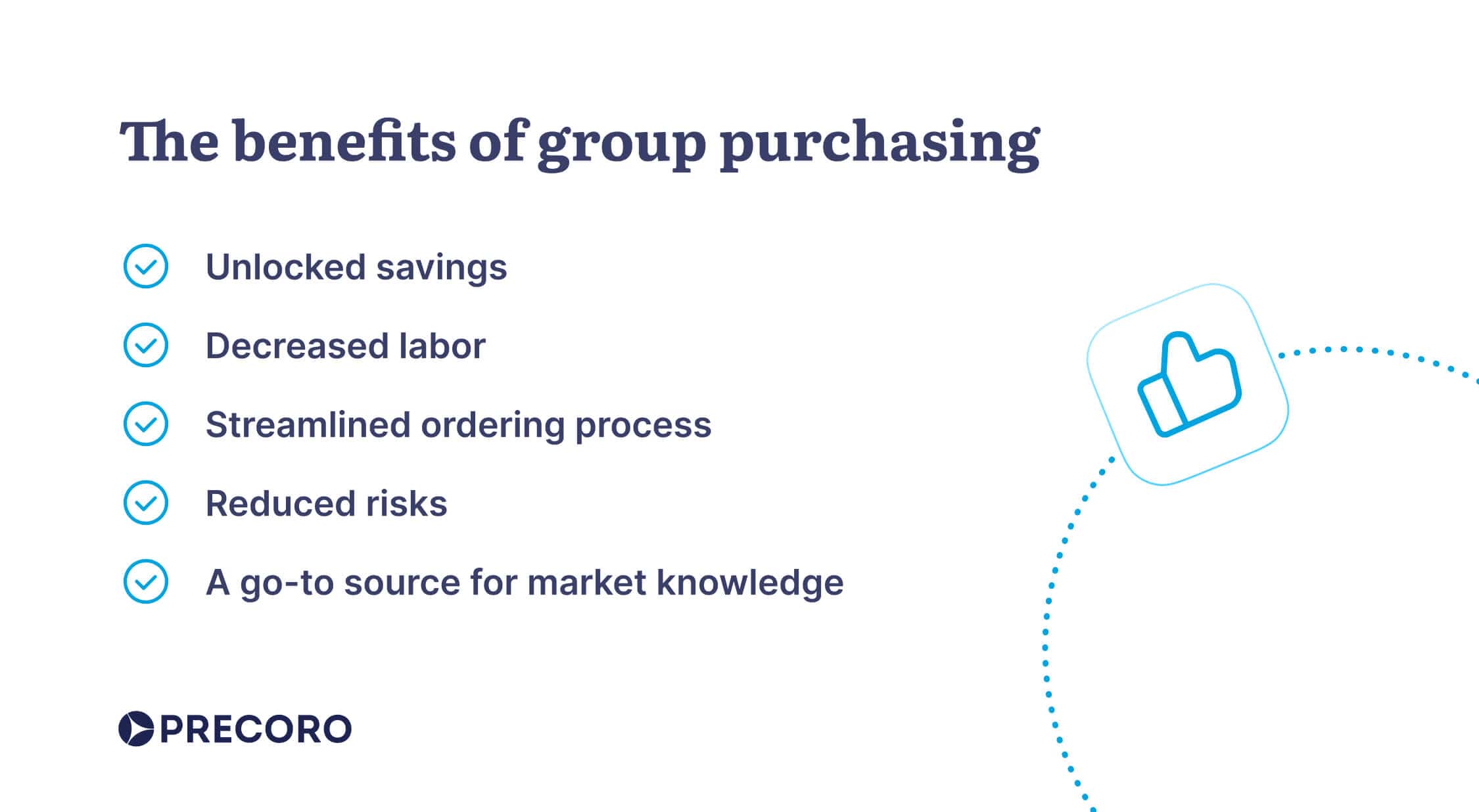
What are the common limitations of GPOs?
Despite the extensive benefits that group purchasing provides, there are also some limitations. Let’s delve into them.
Limited choice of suppliers
GPOs have a predefined list of suppliers, and GPO contracts may not cover some specific types of supplies. The good news is that members can still find suppliers independently, so this limitation is not critical. However, it’s important to look through the supplier lists of GPOs your company is considering to make sure they cover the products and needs your company relies on.
GPO contract restrictions
Members must adhere to the terms and conditions of GPO contracts, which can include minimum order requirements or restrictions on product returns. These conditions might not always align with the individual needs of every member organization. Additionally, companies may need to comply with minimum purchase requirements to qualify for specific discounts or benefits. It’s crucial to verify that GPO recommendations and requirements match your organization’s needs.
Questionable usefulness for large organizations
Smaller members typically derive the most benefit from GPO arrangements. As companies grow and scale, their volume needs and negotiating power increase. Larger organizations order in bulk and make purchases more often so they can efficiently negotiate independently, making the benefits of GPOs less significant for them.
Lack of complete control
While group purchasing organizations provide companies with a list of suppliers and guidelines for efficient procurement, they can’t directly oversee compliance when it comes to member companies’ internal purchasing policies. Companies need additional measures, such as simplified workflows and relevant tools, to enhance visibility and ensure adherence to procurement procedures.
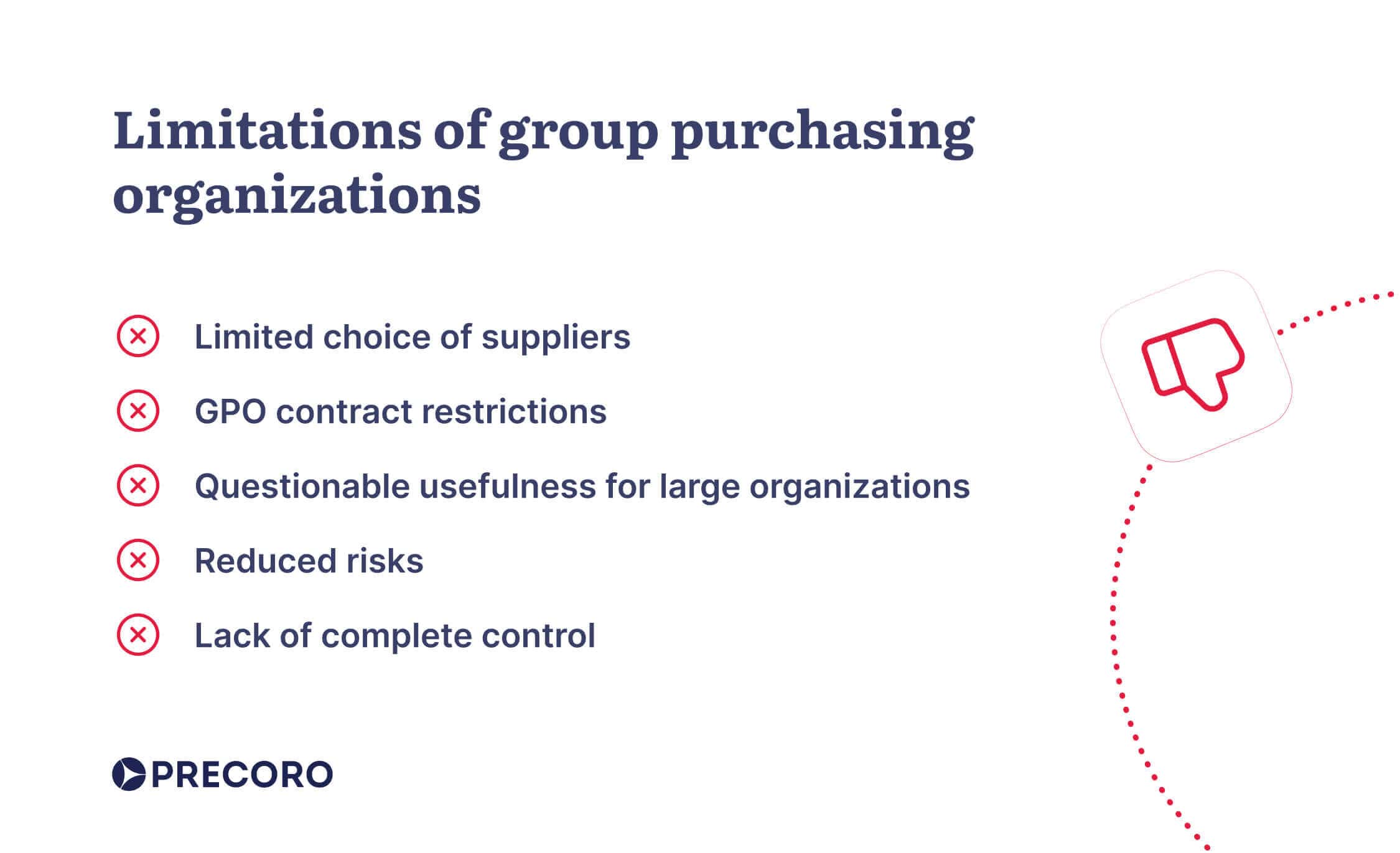
Here are some helpful considerations when choosing a GPO to join:
- What are the fees for members?
- Are there any order minimums?
- How much organizational spending will be on the contract?
- What methods can help requesters follow their company’s established purchasing policy and eliminate maverick spend?
How can procurement software help companies drive more value from GPOs?
Purchasing solutions provide a range of modules designed to streamline the entire procurement process. They include features for creating and approving purchasing documents, managing suppliers and expenses, setting up budgets, and improving spending visibility. Such tools are valuable for members of group purchasing organizations (GPOs) – and even companies that eventually outgrow GPOs – because they enable expense tracking and spending analysis across suppliers and item categories, providing greater negotiating leverage.
Centralized data management
Procurement software consolidates all procurement data and provides a centralized platform for all orders and transactions. This centralization ensures visibility for requesters, approvers, budget holders, department heads, and all other stakeholders. It ensures everyone is on the same page and eliminates the need for back-and-forth communication, as all information is easily accessible to users with the needed access. In addition, the system maintains the audit trail for all procurement documents.
Assurance of compliance
While companies may join GPOs to gain access to better supplier contracts and secure discounted prices, the implementation of procurement software can actually ensure employers adhere to the terms and conditions negotiated by the group purchasing organization.
An easy-to-use interface motivates requesters to actually use the system, while automated approval workflows ensure that approvers can check if the purchase is outside of the contracts and, if so, whether a contracted supplier can provide the required item to avoid maverick spending. With some tools, it’s also possible to see the available budget when creating and approving a request and set up spending limits so that purchase requisitions or purchase orders that exceed them are automatically rejected.
Spend visibility and analysis
Procurement software offers advanced analytics capabilities that enable organizations to analyze spending patterns and identify opportunities for cost savings. This information helps companies decide whether or not they will benefit from joining a GPO, or decide whether they need to remain in it once they’ve grown.
Software with analytics typically also offers detailed reports and dashboards that highlight the most frequently requested categories of goods, the most utilized suppliers, and the departments with the highest spending. By identifying areas for cost-cutting without affecting operational efficiency, companies can eliminate redundant purchases and better manage their inventories.
Supplier performance management
The software enables systematic monitoring and evaluation of supplier performance, including tracking delivery times, product quantities, and invoice verification. This ensures that GPO suppliers meet their commitments and helps identify areas for improvement.
Additionally, the comprehensive data from procurement software, including visible order volumes from specific vendors, allows for better negotiation with suppliers outside of the group purchasing organization.
Simplified procurement operations
Automation of procurement processes leads to faster processing times. Requesters can use templates to quickly create new documents and choose from item and supplier catalogs to conveniently put in order details. Approvers receive notifications when new documents are waiting for them.
Some procurement solutions even have mobile apps that let users review and approve documents on the go. Companies can also organize suppliers and items into catalogs, making them easy to access when placing orders, which simplifies and speeds up the purchasing process.
If you’re looking for an online procurement system to make the most of the GPO you’re in and improve savings, Precoro is a great choice, suitable for various regions, including the USA, the UK, Australia, and South Africa. The system’s benefits include its scalability and high level of customization, which allows users to configure it as their company grows and their needs change.

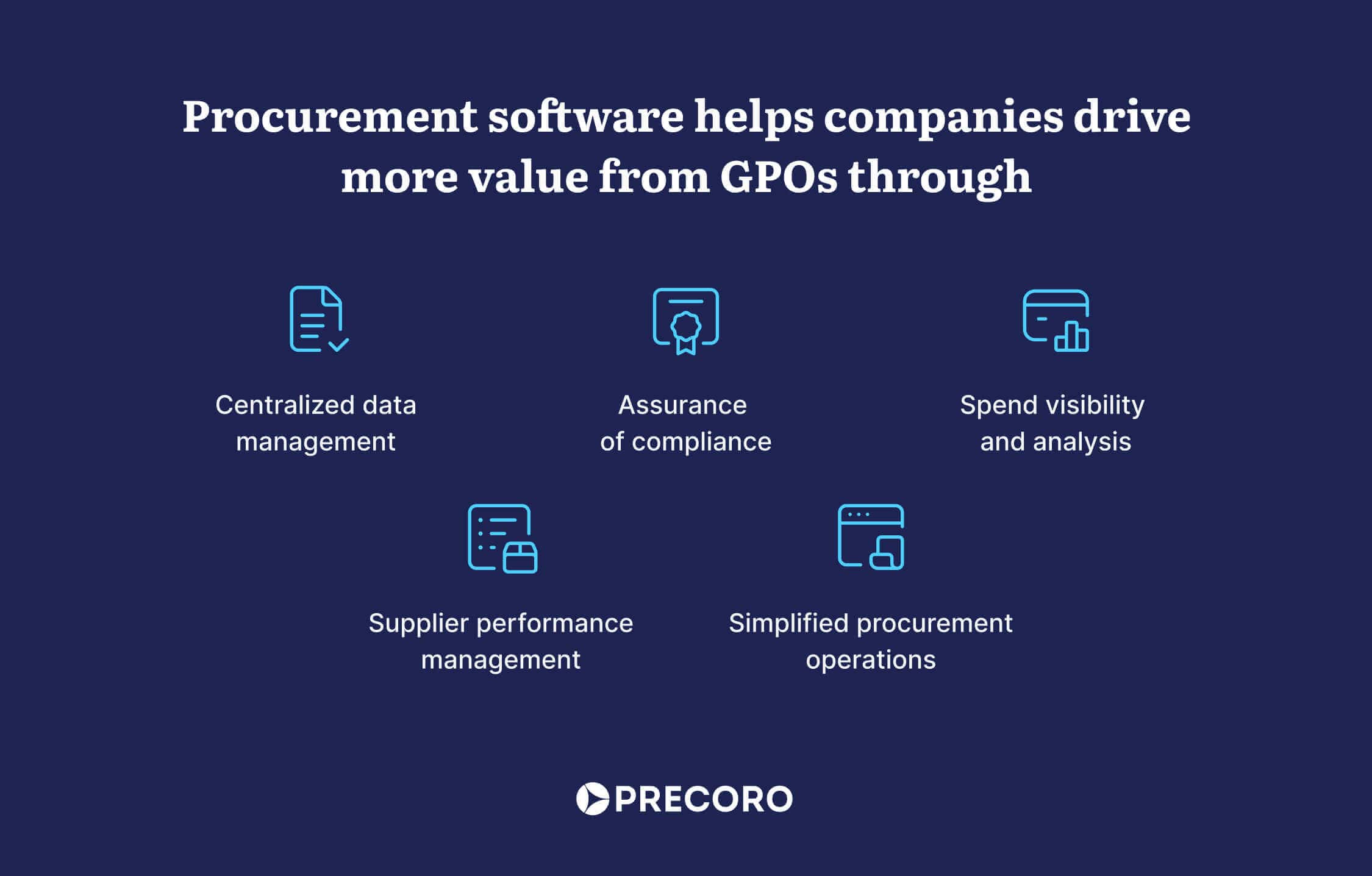
Frequently Asked Questions
A group purchasing organization is an entity that uses the collective buying power of its members to negotiate discounts and favorable terms with suppliers for goods and services. GPOs are especially widespread in the healthcare industry, and hospital buying groups typically serve hospitals, clinics, surgery centers, nursing homes, and home health agencies.
A GPO contract is an agreement negotiated by a group purchasing organization with suppliers that outlines terms, conditions, and pricing for goods and services. GPO members can make purchases with the aforementioned suppliers under such contracts.
A group purchasing organization leverages collective buying power to negotiate better prices and terms with suppliers. It offers discounted pricing, manages supplier relationships and contract negotiations, and often provides additional services such as data analysis and compliance monitoring to improve procurement efficiency for its members.
GPOs earn money primarily through supplier fees, which may be based on a percentage of sales made through the GPO or on a fixed fee. Some GPOs may also charge membership fees.
Empowering GPO purchasing
When a company joins a GPO, its purchasing power increases and it gets access to pre-negotiated supplier contracts with favorable prices. Group purchasing provides member organizations with the following benefits:
- Cost savings
- Lowered labor costs
- Simplified ordering process
- Mitigated supplier risks
- Reliable source for market insights
However, joining GPOs also has some limitations, such as a restricted choice of available suppliers and the possible requirement to order larger quantities to access discounted prices. Plus, it might require extra effort on the part of member companies to ensure their purchasers are compliant with the GPO.
Businesses can implement procurement software to help ensure users follow established purchasing workflows. Procurement tools can also provide valuable spending visibility through dashboards and reports, helping companies decide whether to join a GPO, whether current membership is benefiting them as expected, or whether they’ve grown enough to purchase independently. Throughout all of these stages, such tools let companies order smarter, automate processes, and build better supplier relationships.


